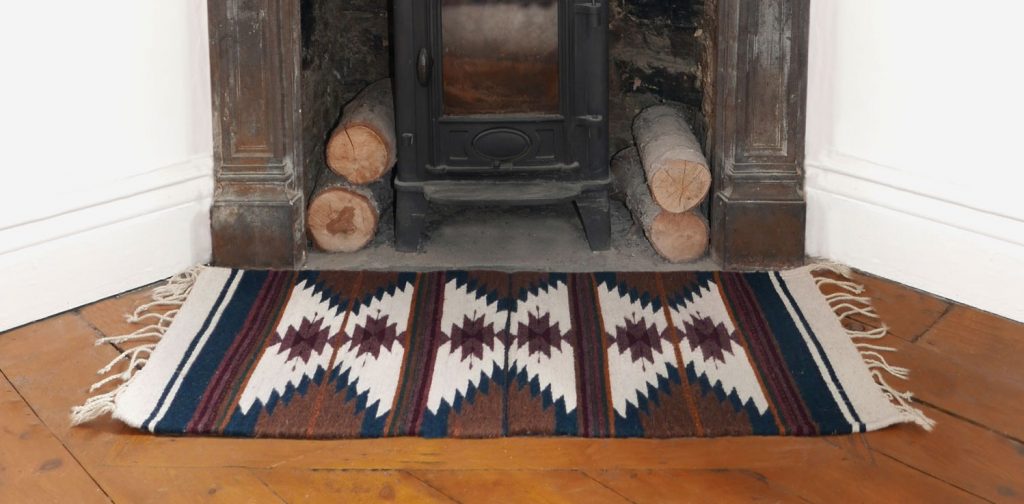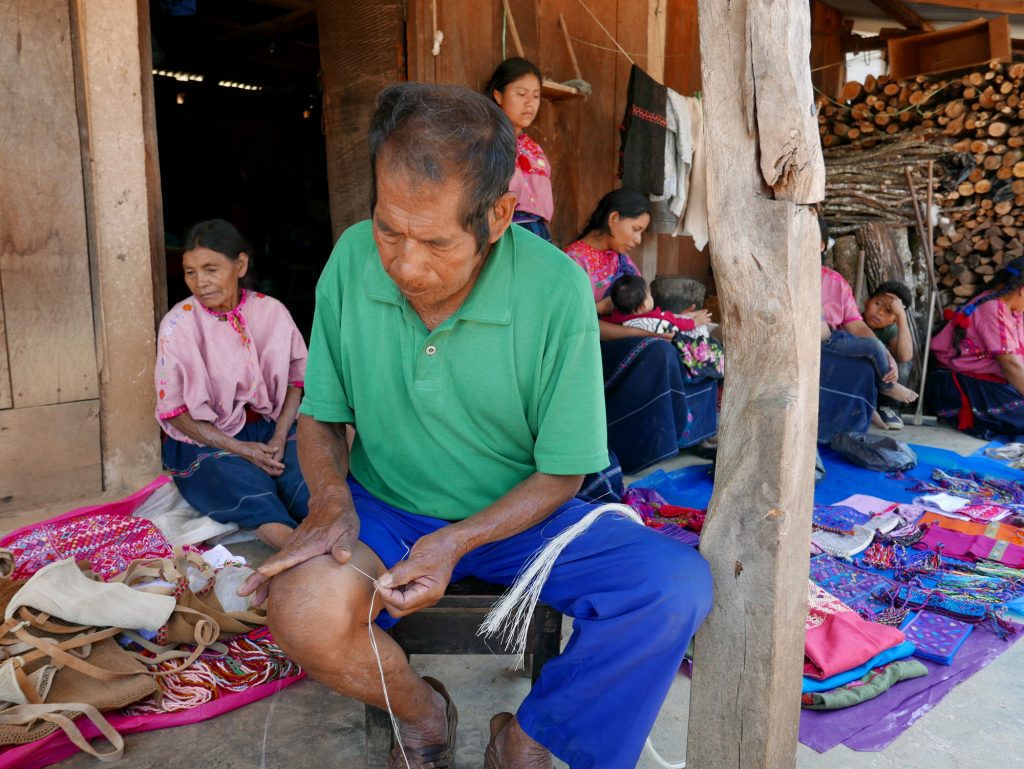Olivia Campus’ company, Nido Collective, sells homeware and fashion accessories with a difference. Olivia works directly with artisans in remote communities in Mexico and Guatemala, who have been using the same craft techniques for centuries to produce unique objects. Sara Walker finds out more.
SW: What’s the story behind the name of the company?
OC: ‘Nido’ is Spanish (and Latin) for nest. You acquire objects, artefacts, implements which have a function, a story behind them or just things that you like. What distinguishes one person’s choice from another is the physical expression of that individual – the person who bought them and also the person who made them. As a collection they create an ambience and an identity, either consciously or subconsciously, of you, your life, as you choose to live it. Creating a nest encapsulates this.
SW: How did it all get started?
I’ve always loved textiles and been fascinated with the diverse techniques that go into producing them, so after graduating with a degree in fashion and textile design I wrote to Threads of Peru, a non-profit organisation who support weavers in the Andes.
I travelled to Peru six months later with the intention of helping to tailor traditional designs and colour schemes to consumer trends. The people I met gave me my introduction to indigenous weaving techniques, working with communities high in the Andes mountains. The weavers are predominantly women.
Studies show that when women receive their own income, their children develop at a faster rate than when men are the sole income providers. Supporting them and connecting these women with the global market not only enables them to have their own income, it demonstrates that their craft has a value and can earn them a fair wage. It encourages them to pass on their skills to their children, therefore preserving it for future generations.
SW: You took a course in backstrap weaving, one of the traditional techniques used to create textiles. It looks both very simple and very complicated! How easy was it to learn?
I think the question is how difficult was it to learn – very! The only simple thing about it is the fact that the loom is portable. You can roll it up and take it anywhere with you. I consider myself quite competent when it comes to learning crafts: knitting, sewing, crochet etc. I pick up techniques quickly. However this was not the case with backstrap weaving, much to my dismay.
I was taught by a Mayan lady whose first language was Tzotzil, an indigenous dialect spoken in Chiapas, Mexico, which bears no resemblance to Spanish. She would demonstrate the multiple steps needed to pass one thread through the warp and then gesture to me for me to try. As soon as I went to do the same (or so I thought), I was interrupted with a frustrated “Por qué??!” and she would correct me and repeat the demonstration. What fascinates me even more is the fact that these designs are woven entirely from memory.
SW: What is it that fascinates you about these artisan crafts?
OC: The patience is what appeals to me about artisan crafts. I probably have more patience for making things than many friends my age (27). However, it is one thing to buy a ball of yarn and knit a scarf; or to buy some fabric and make a dress. It is something completely different to rear the sheep, to shear the wool and handspin the yarn. To then forage for rare plants to prepare the secret recipes to dye the yarn, to backstrap weave the fabric and then handsew a garment together. That to me requires an unfathomable amount of patience and application which is not easy to fully comprehend.
Each time I discover a craft or technique I have not seen before I am filled with a renewed admiration for the patience and the process, and a determination to understand and document it. My favourite products are the Zapotec Rugs. Each design has a different significance.
SW: How do you find the people you work with?
OC: This is always my favourite part of the adventure. I research where a particular craft is from and then travel to the village. Generally when you go off the beaten track, you stick out and people might be curious and ask you why you’re there before you get a chance to say. But if not, I’ll seek out a local and ask them if they know anyone who practices the particular craft.
Mexicans are warm and friendly people. Their craft is a part of their identity and they are eager to share it. If they meet someone who shows a more than average interest in it, and speaks a bit of Spanish, they’ll soon take you under their wing. It’s not always this easy.
There have been times when I have shown up in a town on my own looking for a particular textile, only to find that the people do not understand or speak Spanish at all! In which case I had no choice, but to turn back! Other times I have been lucky enough to be invited to stay with them which gives a wonderful insight into their way of life. I like to work this way, because I know I am going direct to the artisan and the product I am buying is authentic.
From England all the contact is made through Whatsapp believe it or not! Many artisans do not have wifi connections in their homes. But most town squares in Mexico have public wifi, so communication is intermittent, but ultimately possible!
SW: What are your best sellers?
OC: The challenge is getting consumers to understand the work which goes into each piece. Many pieces need to be seen and touched to appreciate its true beauty (a challenge for small e-commerce businesses like Nido Collective.) The cushions do well online as they photograph well. In pop-ups everyone is fascinated by the Deshilado Shawls and Altos Throws.
SW: Which is the craft you’d most like to be able to master yourself?
Thigh spinning would be really satisfying to master. Maguey fibre is extracted from the agave plant by removing the pulp and drying it. The fibre is spun by quite literally rubbing it along the surface of a bare thigh with the palm of the hand. It was one of the most challenging crafts to document. However, I think I would enjoy foot pedal weaving wool. I would love to learn how to weave a Zapotec rug and enjoy working on a larger scale. Wool is one of my favourite fibres, I love its properties. Also being able to work and exercise at the same time would be great!
SW: What’s next for the future? Will you be expanding both products and the number of artisans you work with?
OC: It is early days. Nido Collective is still less than a year old and I am learning every day. I will be refining the collection. Building relationships with the artisans is a very enjoyable process, but it takes time. In the future I would like to increase awareness of the value and significance of these crafts, and to expand the number of artisans I work with. For the time being, I will be getting back to the drawing board and having more input in the design process. So stay tuned for some exciting new collections in the new year!
For more information about Nido Collective or to browse the collection, visit www.nidocollective.com.







